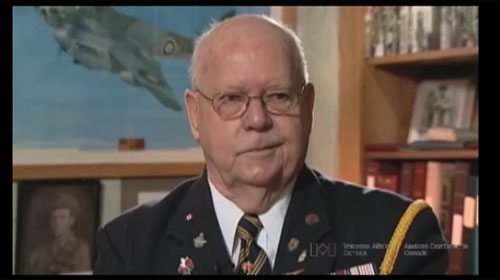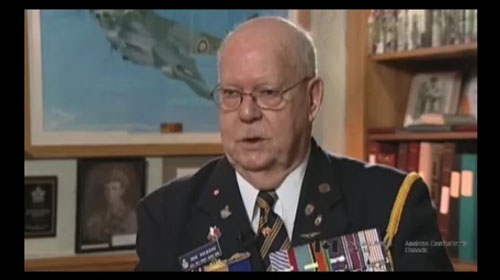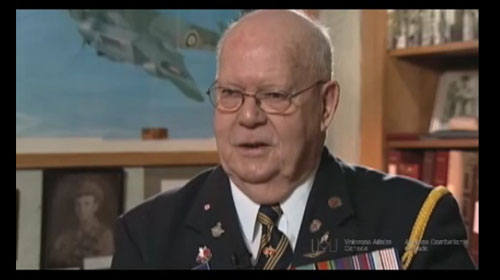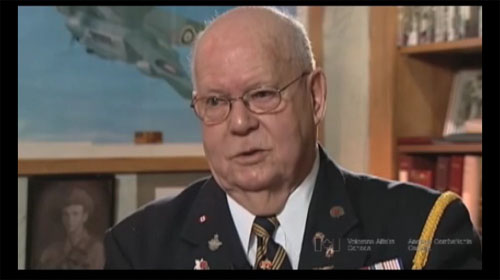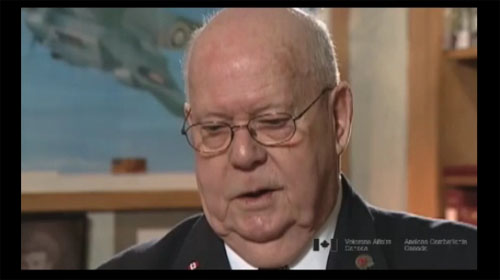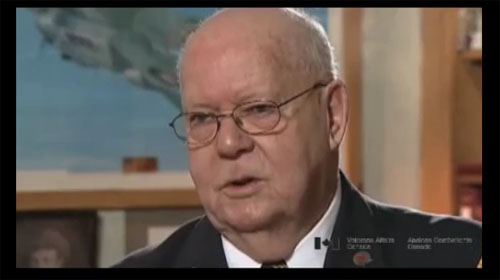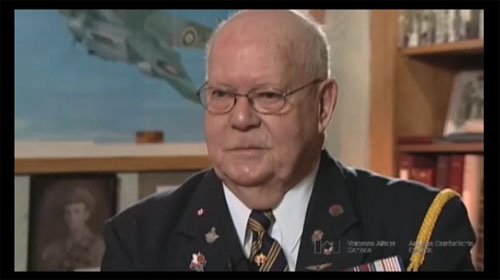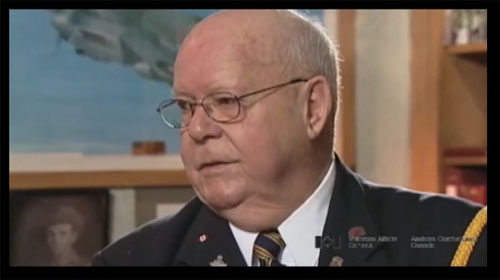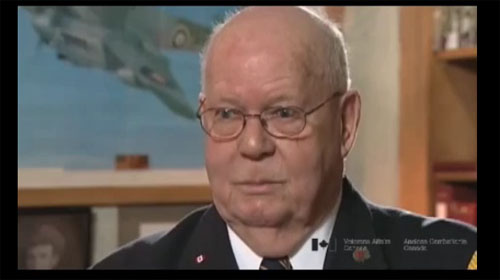Caught By A Night Fighter
Heroes Remember
Caught By A Night Fighter
Transcript
Description
Mr. Wickens describes a nearly tragic bombing run over Germany’s V2 rocket sites
Donald Wickens
Mr. Wickens was born in Moosejaw, Saskatchewan. Despite the scarcity of jobs during the depression, he took employment with the Bank of Montreal, where he worked for two years prior to enlisting. Although not initially eager to do so, Mr. Wickens decided to join his friends who had preceded him into the service. Unlike many of his friends, however, he joined the Royal Canadian Air Force with the intention of becoming a navigator, and completed his training in Portage La Prairie. Once overseas, Mr. Wickens became a member of 434 Blue-Nose squadron and took part in 37 bombing and mine laying missions over Northern Europe. He and the rest of his aircrew were decorated after surviving two air attacks in which their aircraft was disabled. After leaving the service, Mr. Wickens returned to the Bank of Montreal. He currently resides in Prince Albert, Saskatchewan.
Meta Data
- Medium:
- Video
- Owner:
- Veterans Affairs Canada
- Duration:
- 3:13
- Person Interviewed:
- Donald Wickens
- War, Conflict or Mission:
- Second World War
- Location/Theatre:
- Europe
- Battle/Campaign:
- Bomber Command
- Branch:
- Air Force
- Units/Ship:
- 434 Squadron
- Rank:
- Flying Officer
- Occupation:
- Navigator
Related Videos
- Date modified:



